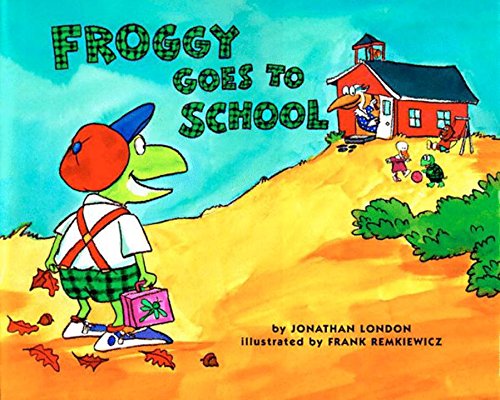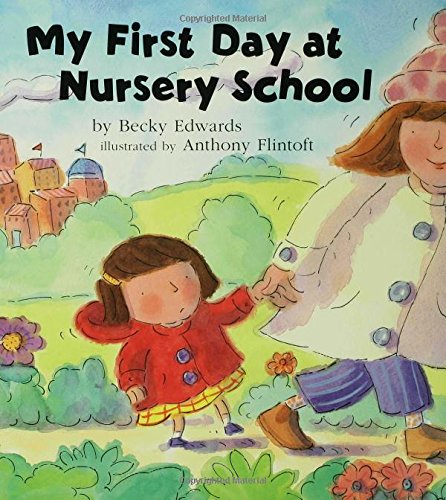For our column, Ask an Educator, we turn to educators, whether teachers, tutors, or principals, to answer frequently asked questions from parents. To send in your question, email danielkippwhittaker@beijing-kids.com.
This week, our question is: “How can I help prepare my child for preschool?” Answering for us is Alicia Carey, Nursery Teacher at 3e International School.

Going to preschool for the first time is a major step for a child. As a teacher, I am often approached by first time parents with many questions on how they can help prepare their little ones for this new experience.
Below, I have listed the ten simple tips that will help ensure a smooth transition to preschool that I share with parents and which might work for you and your child as well.
1. Take the Time to Talk with Your Child
One of the most important things in helping your child prepare for preschool is to have a talk with him or her ahead of time. With a positive attitude, explain to your child what is going to happen in school. For instance, you can say:
“This year, you will be going to preschool! At preschool, you will learn new things, meet new friends, play on the playground, eat snacks, sing, dance, and have lots of fun!”
Also, the night before, you can say “You are going to have so much fun tomorrow!” Be excited about preschool! If your child sees that you are excited, he/she will be excited too!
2. Establish a Schedule/ Rules
Once you have enrolled your child in school, it is important to establish a schedule according to your child’s preschool schedule. Following a daily schedule will not only help prepare your child for preschool, but also with understanding the basic habits and routines necessary in school, such as washing hands before eating, washing hands after using the toilet, tidying up the play area, and much more. If you do not have a schedule or a set ground of rules at home, it will be difficult for your child to adjust to routines and rules in preschool.
3. Read Books
Prior to preschool, I highly suggest parents to read books about starting school with their child. This will help the child understand what to expect. During the reading, you can ask your child how the main character is feeling and why. Allow your child to express his or her feelings about starting school and then remind them that there is nothing to worry about.
Here are a few books that you can read to your child to help them get ready for preschool:

‘Preschool Hooray!’ by Linda Leopold Strauss

‘Froggy Goes to School’ by Jonathan London

‘My First Day at Nursery School’ by Becky Edwards
4. Work with Your Child on Fine Motor and Social Skills while Meeting His/ Her Personal Needs
Although it is not a requirement, it would be a good idea to help your child with their fine motor skills before school starts. Activities using play dough, puzzles, crayons, building blocks, paints, and scissors are excellent in enhancing your child’s fine motor skills.
As for social skills, play groups, indoor playgrounds, and Gymboree are great opportunities for interacting with other young children. You can also teach your child the importance of engaging in positive play and sharing with others. With regards to meeting personal needs, you can help your child to become independent in toileting, eating, and changing his/her shoes.
5. Take Your Child to Meet His or Her teacher
Before the beginning of the school year, schools will often host an ‘Open House’, which gives families an opportunity to meet the teachers. It is good for parents to bring their child along with them to school.
Once in the classroom, allow time for your child and teacher to get to know each other. Do not worry if your child does not communicate with the teacher immediately. It takes time for children to establish a relationship with an adult outside of the family unit.
6. Explore the Classroom with Your Child
It is never a good idea to drop your child off in an environment with complete strangers. Most early childhood educators recommend that parents spend time (between 15-30 minutes) exploring the classroom with their child. When you see that your child is comfortable in the room, you may exit the room quietly. However, if the child is having a difficult time, you can ask the teacher to stand next to you as you say good-bye to your child. From there, the teacher can play and read books to the child to help him or her stop crying.
7. Expect Separation Anxiety
It is considered normal for children to go through separation anxiety during the first couple of weeks when dropped off at school. Of course, there will be plenty of tears, but the main thing for parents to do is to remain calm and stay positive. On your way to school, remind your child how much fun he or she will have with their new friends. When it is drop off time, make certain to reassure your child (with a smile on your face) that you will be back at the end of the day to pick them up. Keep your good-byes short, simple, and sweet. The longer it takes for you to say good-bye to your child, the longer your child clings to you, thus making it hard for you to exit the building.
8. Resist Re-entering the Classroom
As hard as it is to hear your child crying and screaming at the top of their lungs, try not to re-enter the classroom. The moment the parent enters the room, the child will feel comfortable again, knowing that mommy or daddy is there. This will make the transition process go on longer than expected. Again, reassure your child that everything will be alright, and you will be back at the end of the day to pick them up. Trust your child’s teacher!
9. Transitional Objects
Providing your child with his or her favorite blanket, toy, family photo, or book is a great way for him or her to cope in the classroom while parents are not present.
10. Be Patient
Since preschool is a major step in a child’s life, parents need to understand that it will take time! Some children are able to transition easily, while others may take a while. For children having a difficult time adjusting, the best thing for parents to do is to stay positive and communicate regularly with the teacher. Together, we can come up with a solution for handling your child’s transition phase.
Photo: courtesy of Alicia Carey




